Loading...
Products
Magic: The Gathering Line
You know how players are always complaining about cards being broken and certain decks becoming too powerful for the format? In fact, it is pretty usual to hear voices every now and then asking for a new adjustment to the ban list. In the case of Pokémon, it is of course the same, except for the detail that we don’t have an official ban list for standard format (which is the one that is officially played) and it is extremely rare that we see an emergency decision from the Pokémon Company itself. In all my years playing Pokémon TCG, I’ve only witnessed them intervening and banning a card in the middle of a format once. And that was truly a historical moment.
Grab some popcorn and join me on this journey. This is the story of the most powerful and unbalanced deck in the history of Pokémon, a deck with such power that led to the first and only ban of the modern Pokémon era. Let’s go back in time to see the power of Seismitoad and Lysandre Trump Card.
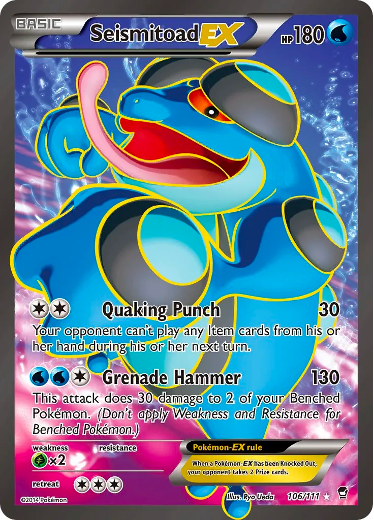
We are in the year 2014 and a new expansion has been launched, Furious Fist. Among all the new cards, there is one that immediately picks the attention of certain players: Seismitoad EX.
Seismitoad EX (Seismitoad is a Pokémon from the fifth generation, not very popular to be honest, if you can recall it) was a water type Pokémon with a very bad weakness considering that the format was dominated by some Grass type decks, but that has a very unique attack. Quaking Punch deals "only" 30 damage but stops your opponent from playing item cards from their hand. To provide a little bit of background, item lock strategies did not first appear with Seismitoad. In fact, they had been part of the game for many years but required a significant amount of effort to set up. What really made Seismitoad stand out is the fact that you could lock your opponent down very easily, as early as in your first turn if you drew the Double Colorless Energy. As such, a lot of decklists that tried to focus on the power of the item lock started to pop up and players experimented with the concept, including a lot of disruption cards to make the lock even more powerful.
Honestly, it was overall a solid deck as it was able to slow down many strategies and put a lot of pressure on the field. There were only two downsides Seismitoad had: First, the damage output was not very high, so it took time to KO an opponent’s Pokémon and, second, the fact that Virizion Genesect was one of the most powerful decks in Standard. Virizion Genesect was a grass-type focused deck that had a lot of energy acceleration and was immune to most of Seismitoad’s disruption. If you consider the fact that Seismitoad was weak to Grass, this explains very well why Seismitoad was more or less a tier 2 deck when it was released. But our story, dear Pokémon fans, has just begun… Little did we know that Seismitoad’s reign of evil was already upon us.
Some time passed and new sets were released. November 2014 is the crucial date as Phantom Forces hit the stores. Phantom Forces was not only one of the most influential sets in the XY era, it introduced so many powerful archetypes and cards that completely shaped the way in which the game was played. But what did this mean for Seismitoad? The deck received some very powerful additions that immediately catapulted it from tier 2 or 2.5 to an undiscussed tier 1:
Head Ringer was a tool card that, unlike most of the tools in the game, could only be attached to one of your opponent’s EX Pokémon and gave it one extra energy cost to use any attack. This was absolutely crucial because that gave Seismitoad the time it needed to KO a Pokémon before it could even attack. Remember that energy cards are like mana in Magic and that Seismitoad had a lot of options to get rid of energy cards. The combination of Head Ringer + things like Crushing Hammers were too much for certain decks.

VS Seeker got reprinted. This was an item that became an instant staple regardless of the deck you played, as it provided the ability to recycle supporter cards from your discard pile. For Seismitoad this helped reusing powerful disruption effects from the discard pile over and over.
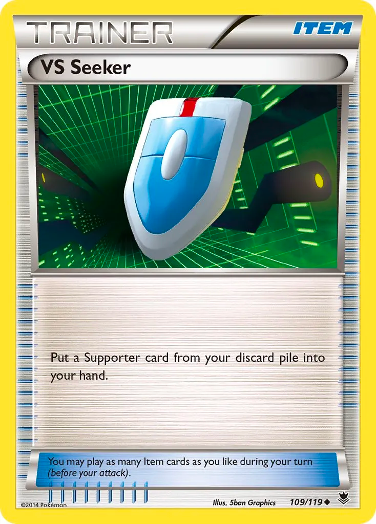
Phantom Forces also gave Seismitoad its best partner in crime… and a fairy, nonetheless! Slurpuff looked very innocent when we first saw it and a little bit underwhelming as it "just" gave an extra card each turn. But when you think about it, it was exactly what Seismitoad was missing. Seismitoad decks were often presented with the choice of playing a supporter to draw and get resources or using another supporter that had a disrupting effect on the field. With multiple Slurpuffs on the field, that tough decision disappeared as you could play your disruptive supporter (e.g. Team Flare Grunt) and use Slurpuff’s ability to draw cards. As such, hybrid Seismitoad decks evolved and "Seismitoad Slurpuff" was born.
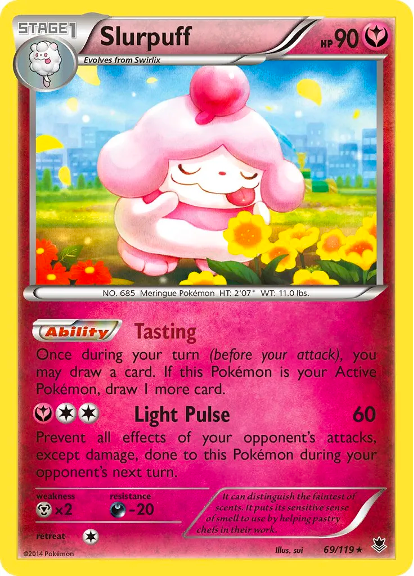
I left Lysandre’s Trump Card for the very end. I don’t know where I should begin to explain this. It is probably the most powerful card I’ve seen in my life and this is not an exaggeration. I am sure that you know how cards that allow you to recycle resources from the discard pile are often pretty broken, right? Now… what would happen if you were given the chance to reuse EVERYTHING in your discard pile again? This is what Lysandre did. This supporter card forced both players to shuffle back their discard piles back into the deck. The implications of having such a card are massive (destroying mill decks, for instance) but there is something you need to remember and it’s that, as I explained before, VS Seeker was another element in the equation.
This meant that a player could use Lysandre Trump Card once and after a while, use VS Seeker to use it again, entering thus into situation with infinite resources. So… what was the impact this had for Seismitoad? Easy. Seismitoad never ran out of disruption cards. It didn’t matter that you were able to replenish your energy cards, Seismitoad could use them over and over to leave you with nothing in the field. All of this while you couldn’t use half of your deck because of the item lock restriction.
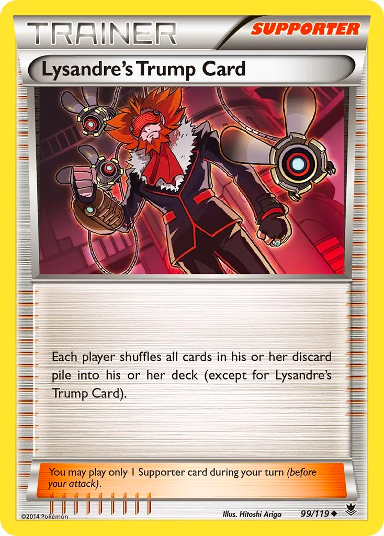
It is difficult to explain the situation this created to someone that has not played during that period. To say that Seismitoad was powerful or a tier 1 is an understatement. I’ve never seen something like that. There were suddenly two types of players: those who played Seismitoad and those who tried to play something that would counter it. There was no grey in between. And the funny thing is that Seismitoad was still able to prevail regardless of the counters that people brought. The player base became very angry and some local stores started to consider banning Seismitoad for non-official tournaments to avoid the monopoly situation. It also didn’t help that Virizion Genesect, the deck that really had a chance against Seismitoad was a bit expensive, so most players could not afford getting it.
I have to say I was Team Seismitoad and I enjoyed playing the deck a lot. In fact, after all these years, I still keep my Seismitoad list from that period that helped me win a lot of games.
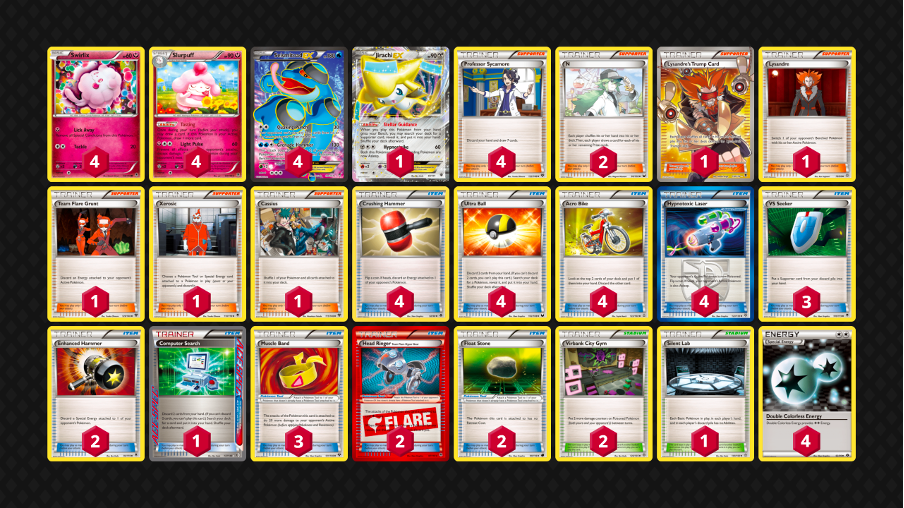
The deck focussed uniquely and entirely around Seismitoad (you really didn’t need more) and it relied on the power of Slurpuff to get you the disruption cards you needed every moment. I have a very strong mix of feelings looking at this list right now…
Things continued like this for a couple of months. There was still a lot of controversy among the players and lists that were specifically built for the Seismitoad mirror match but nothing changed. Then, at the beginning of 2015, a new set appeared in the Horizon: Roaring Skies. This set featured one of the most powerful legendary Pokémon ever, Mega Rayquaza, and also came with a new drawing resource in the form of Shaymin EX. In the blink of an eye, Shaymin became the most wanted card in the game as it avoided dead drawing and fit in every single strategy. No wonder its price suddenly reached 50 Euros or more.
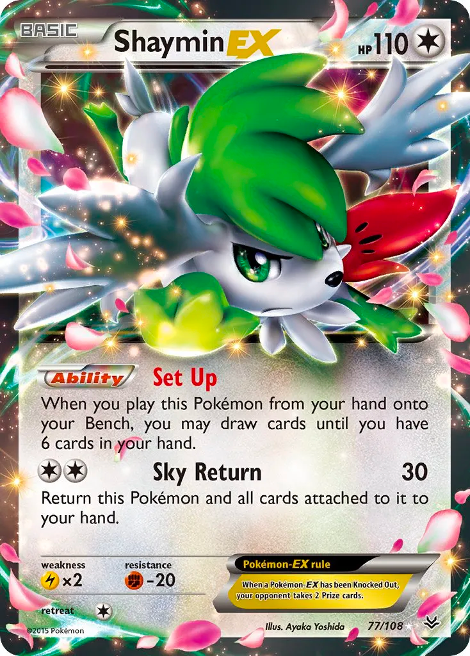
But what does this have to do with Seismitoad? Well… this only helped the deck take the infinite loop concept one step further. In Spring 2015, three times World Champion Jason Klaczynski piloted a Seismtoad Shaymin deck to the finals of the Spring Regionals, where it beat Virizion Genesect in a very intense match that lasted more than one and a half hours! If you are interested, you can watch the entire game here in the official Pokémon Channel.
Jason’s deck had a very interesting addition, Super Scoop Up. This item allowed the player to toss a coin and return a Pokémon to their hand. This worked to heal Seismitoad but also to keep drawing with Shaymin EX. While I have never been able to see Jason’s exact list, I am sure it is very similar to the following one I put together after watching the stream a couple of times (if you have the 60 cards, feel free to hit me up!).
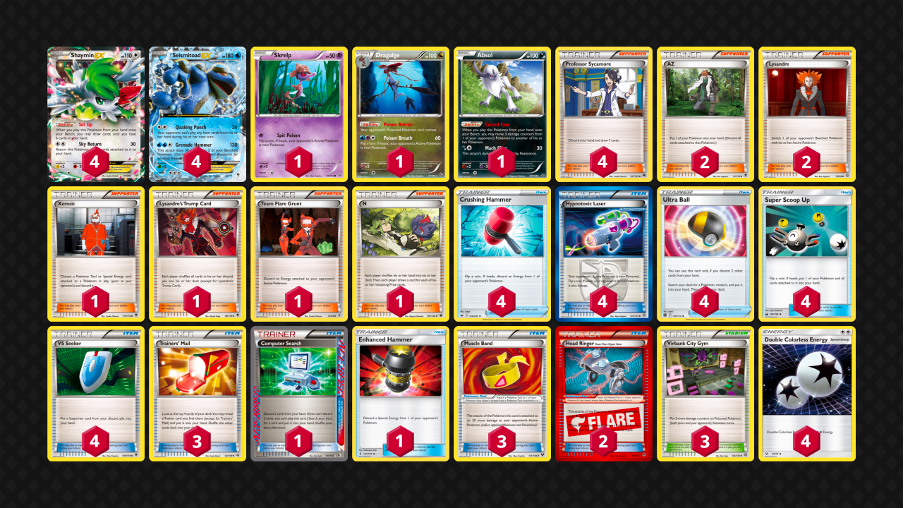
All this made it impossible for Pokémon to keep quiet and they decided to take a drastic decision that has never been repeated: they banned Lysandre in the middle of the format.
This is the statement that was published:
As of June 15, 2015, Lysandre’s Trump Card (XY—Phantom Forces, 99/119 and 118/119) will be banned from all sanctioned Play! Pokémon tournaments in most of the world. (The ban will go into effect in Japan on June 20.) This card has created an undesirable play environment because it:
People were relieved. It had been too much and it was good to see that at least Pokémon was taking steps in the right direction. That ended the Seismitoad problem once for all… or did it not?
What happened to Seismitoad after the ban?
In case that you are wondering, the ban was effective. Seismitoad lost a lot of its power and was never a tier 0 deck again. But even without Lysandre by its side, the item lock was still too powerful and Seismitoad was a vital part of the metagame until it rotated out of the Standard format. In fact, over the course of the years, Seismitoad adapted and kept winning a lot of tournaments in combination with other cards. Some popular decks were Seismitoad Garbodor, Seismitoad Giratina and Seismitoad Zoroark in Expanded.
Pokémon has never banned a card after Seismitoad’s dominanace and it is a game that is pretty well known for its diverse metagame nowadays. I always wonder what happened to the designers when they decided to print Lysandre Trump Card. Maybe they just didn’t consider its possible inclusion in Seismitoad decks and the power it would bring to the tables. I think this is yet another story of a card game that failed (understandably) to predict the exact impact in a format with such an extensive pool of cards.
Seismitoad EX is and will always be one of the most iconic cards in the game. When it first came out, it was very difficult to phantom (pun intended) the impact it was going to have in the game and how powerful it would eventually become. If you ask me, I think it was banned at the right moment. I am going to end this article with one question for you: Have you experienced a situation like that in any card game?
Writing this has truly been a journey so thanks so much for reading! I hope you enjoyed it.